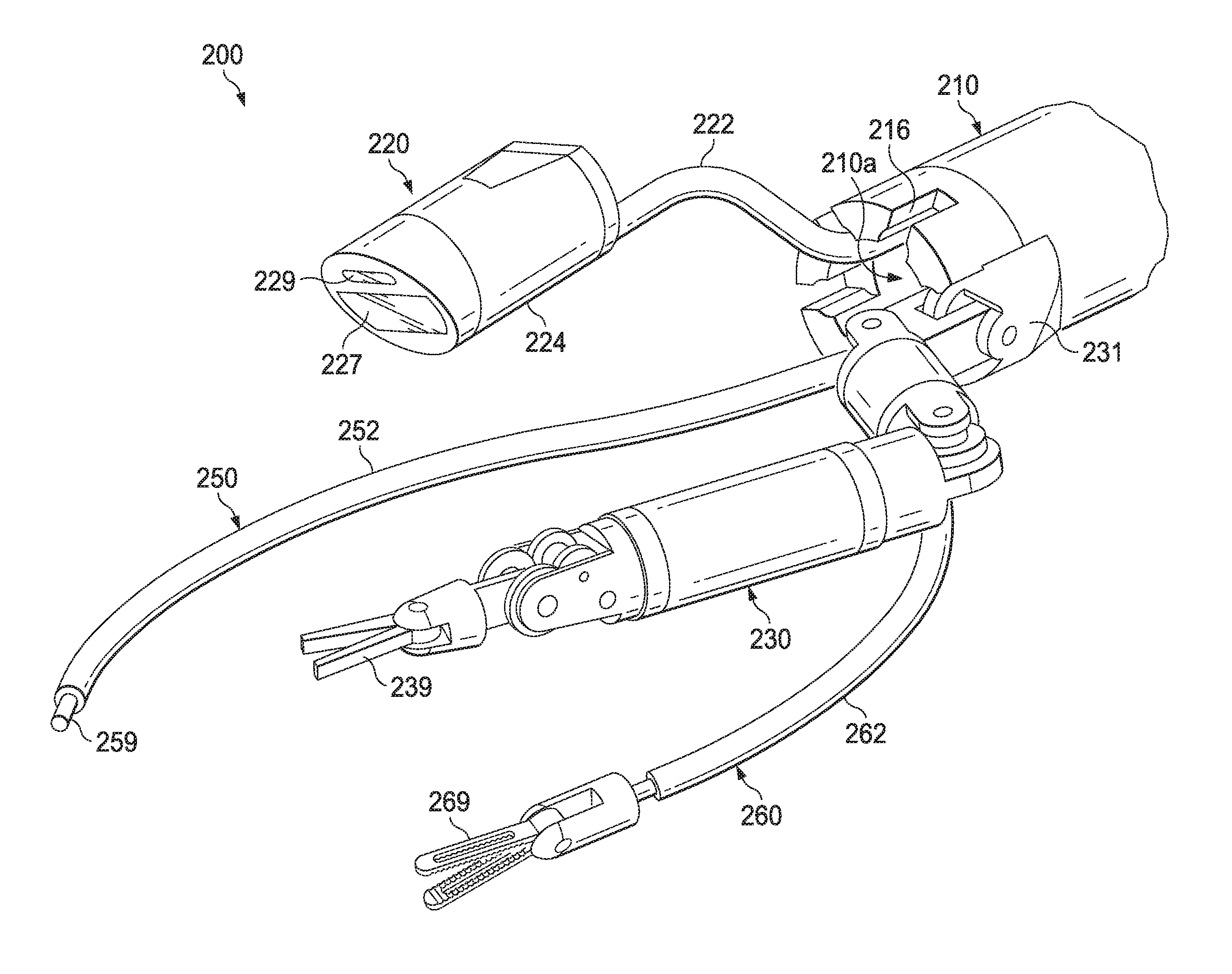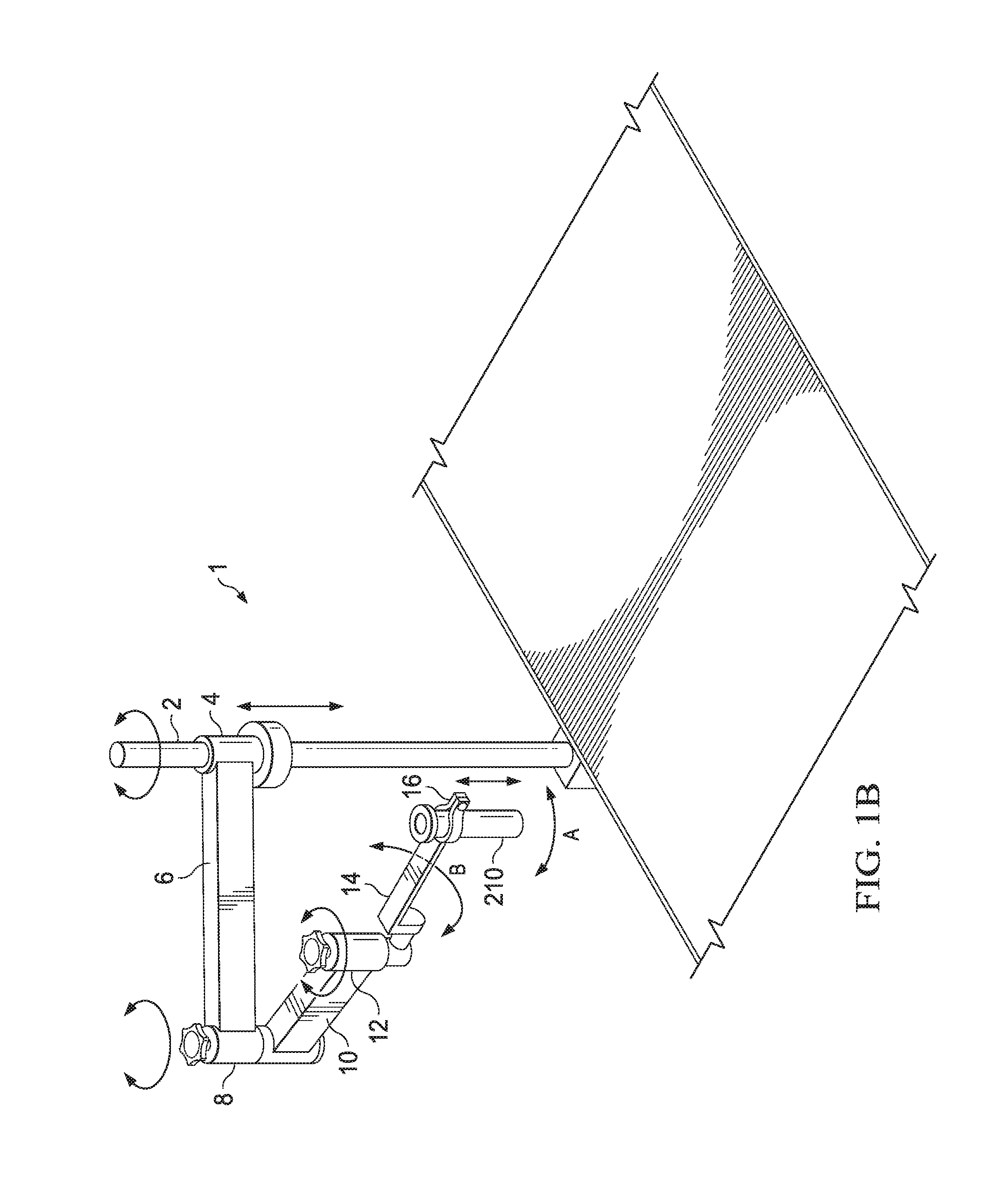Robotic Devices and Systems for Performing Single Incision Procedures and Natural Orifice Translumenal Endoscopic Surgical Procedures, and Methods of Configuring Robotic Devices and Systems
a robotic device and endoscopic technology, applied in the field of robotic devices and systems, can solve the problems of limited access to instruments attached to the end of the surgical robotic arm, difficulty in surgical procedures,
- Summary
- Abstract
- Description
- Claims
- Application Information
AI Technical Summary
Benefits of technology
Problems solved by technology
Method used
Image
Examples
Embodiment Construction
[0038]Example embodiments will now be described with reference to the accompanying drawings, which form a part of the present disclosure, and which illustrate example embodiments which may be practiced. As used in the present disclosure and the appended claims, the terms “example embodiment,”“exemplary embodiment,” and “present embodiment” do not necessarily refer to a single embodiment, although they may, and various example embodiments may be readily combined and / or interchanged without departing from the scope or spirit of example embodiments. Furthermore, the terminology as used in the present disclosure and the appended claims is for the purpose of describing example embodiments only and is not intended to be limitations. In this respect, as used in the present disclosure and the appended claims, the term “in” may include “in” and “on,” and the terms “a,”“an” and “the” may include singular and plural references. Furthermore, as used in the present disclosure and the appended cl...
PUM
 Login to View More
Login to View More Abstract
Description
Claims
Application Information
 Login to View More
Login to View More - R&D
- Intellectual Property
- Life Sciences
- Materials
- Tech Scout
- Unparalleled Data Quality
- Higher Quality Content
- 60% Fewer Hallucinations
Browse by: Latest US Patents, China's latest patents, Technical Efficacy Thesaurus, Application Domain, Technology Topic, Popular Technical Reports.
© 2025 PatSnap. All rights reserved.Legal|Privacy policy|Modern Slavery Act Transparency Statement|Sitemap|About US| Contact US: help@patsnap.com



